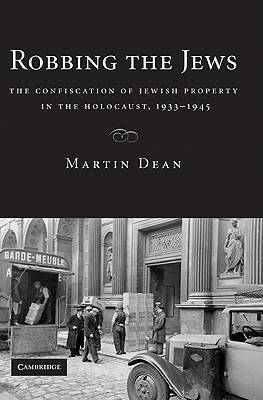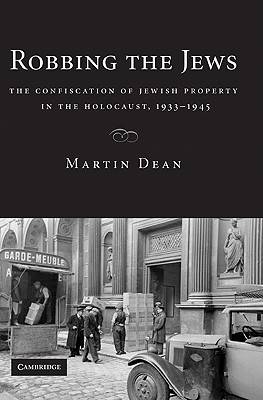
Je cadeautjes zeker op tijd in huis hebben voor de feestdagen? Kom langs in onze winkels en vind het perfecte geschenk!
- Afhalen na 1 uur in een winkel met voorraad
- Gratis thuislevering in België vanaf € 30
- Ruim aanbod met 7 miljoen producten
Je cadeautjes zeker op tijd in huis hebben voor de feestdagen? Kom langs in onze winkels en vind het perfecte geschenk!
- Afhalen na 1 uur in een winkel met voorraad
- Gratis thuislevering in België vanaf € 30
- Ruim aanbod met 7 miljoen producten
Zoeken
Robbing the Jews
The Confiscation of Jewish Property in the Holocaust, 1933-1945
Martin Dean
Paperback | Engels
€ 43,45
+ 86 punten
Uitvoering
Omschrijving
Robbing the Jews reveals the mechanisms by which the Nazis and their allies confiscated Jewish property, demonstrating the close relationship between robbery and the Holocaust. The spoliation evolved in intensifying steps. The Anschluss and Kristallnacht in 1938 reveal a dynamic tension between pressure from below and state-directed measures. In Western Europe the economic persecution of the Jews took the form of legal decrees and administrative measures. In Eastern Europe authoritarian governments adopted the Nazi program that excluded Jews from the economy and seized their property, based on indigenous antisemitism and plans for ethnically homogenous nation states. In the occupied East, property was collected at the killing sites - the most valuable objects were sent to Berlin, items of lesser value supported the local administration and rewarded collaborators. At several key junctures robbery acted as a catalyst for genocide, accelerating the progression from pogrom to mass murder.
Specificaties
Betrokkenen
- Auteur(s):
- Uitgeverij:
Inhoud
- Aantal bladzijden:
- 448
- Taal:
- Engels
Eigenschappen
- Productcode (EAN):
- 9780521129053
- Verschijningsdatum:
- 18/01/2010
- Uitvoering:
- Paperback
- Formaat:
- Trade paperback (VS)
- Afmetingen:
- 155 mm x 234 mm
- Gewicht:
- 635 g

Alleen bij Standaard Boekhandel
+ 86 punten op je klantenkaart van Standaard Boekhandel
Beoordelingen
We publiceren alleen reviews die voldoen aan de voorwaarden voor reviews. Bekijk onze voorwaarden voor reviews.









